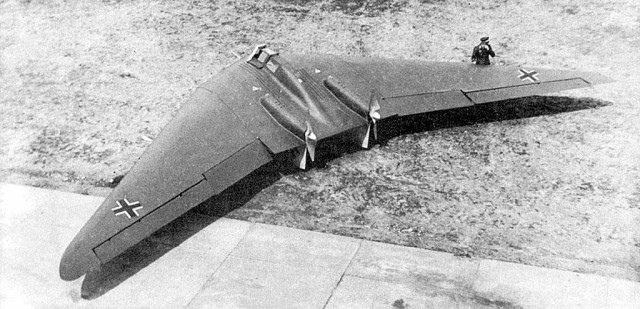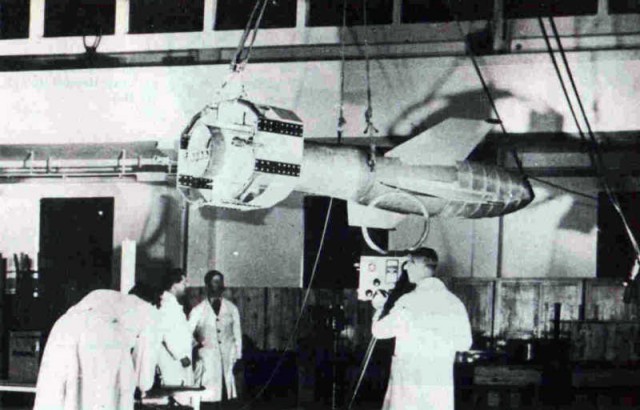During World War Two Nazi research and development of military weapons, aircraft, vehicles and equipment took place on a massive scale. These projects were top secret, with Nazi scientists and engineers focusing on some of the most sophisticated technology, years ahead of other nations.
Here are some examples of the Nazis top secret weapons development and how they have shaped our modern inventory.
Flying Wing
The Horten Ho 229 bomber aircraft was the first stealth aircraft in the world. It could hold up to 2000lbs of weapons and could fly at a height of almost 50,000 feet, reaching speeds of around 600mph. The aircraft had two turbojet engines, gun cannons, and rockets.
Nazi party chief Hermann Göring sanctioned the project and dedicated more than 500,000 Reich Marks to the project. The Horten took to the air for the first time in 1944, but incurred many issues and so its use during the war was short-lived.
Modern Equivalent:
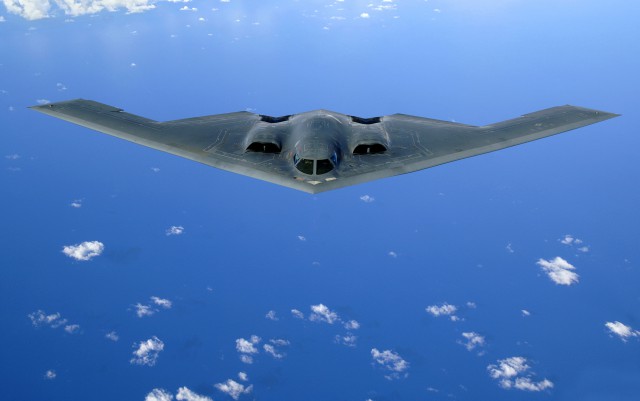
Seemingly a direct descendant from the Horton Ho 229, the B-2 Spirit is an American heavy strategic bomber, featuring low observable stealth technology designed for penetrating dense anti-aircraft defenses; it is a flying wing design with a crew of two. The bomber can deploy both conventional and thermonuclear weapons, The B-2 is the only acknowledged aircraft that can carry large air-to-surface standoff weapons in a stealth configuration.
Guided Missiles
The Fritz X was a bomb made up of almost 3,500lbs of explosives.It was fitted with a radio and guidance equipment so that it could be directed right to its target. It could get through almost 30 inches of armory and could be dropped from 20,000 feet, which meant the aircraft deploying the bomb couldn’t be reached by anti-aircraft fire.
Its use during the war was limited since only a few German aircraft were suitably built to carry and drop the bomb. Even so it for the limited time it was used, it caused massive damage. In September 1943 during the Salerno landings, the Italian battleship Roma, flagship of the Italian fleet, received two Fritz X hits and one near miss and sank after her magazines exploded. 1,255 men, including Admiral Carlo Bergamini, died. Her sister ship, Italia, was also damaged but reached Tunisia. At least 5 more ships were damaged by Fritz X strikes before the allies found a way to impede the guidance signals.
Modern equivalent:
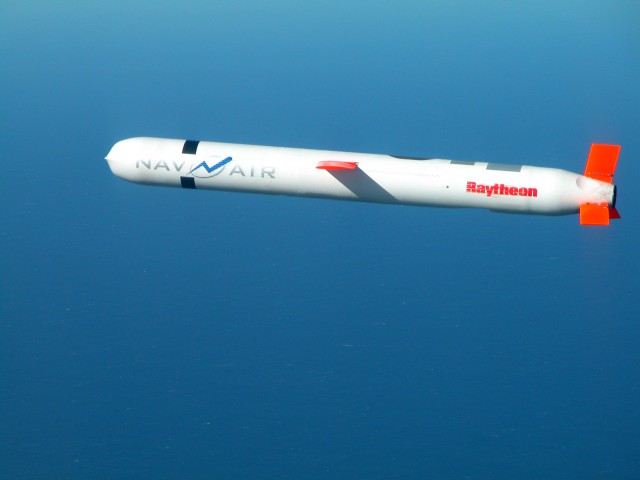
The modern day cruise missiles are guided missiles used against terrestrial targets, so called because the major portion of its flight path is conducted at cruise speed. Cruise missiles are designed to deliver a large warhead over long distances with high accuracy.
Modern cruise missiles are capable of traveling at supersonic or high subsonic speeds, are self-navigating, and are able to fly on a non-ballistic, extremely low-altitude trajectory.
Unmanned Ground Vehicles
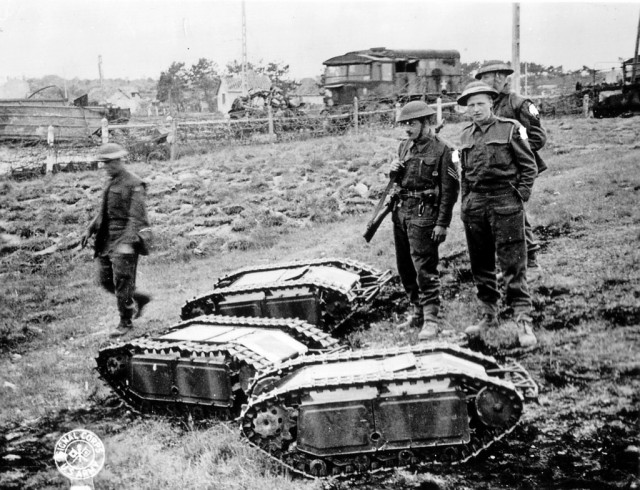
The Goliath or was a tracked ground mine that was controlled remotely using a joystick and was powered by electric motors. It could carry up to 220lbs of explosives and could be steered around landmines to deliver the bomb direct to its target. Over 7000 were built and was the starting point for radio remote controlled technology.
Modern equivalent:
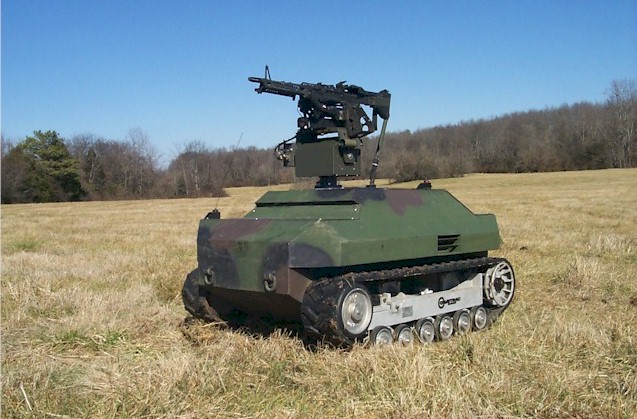
Modern day Unmanned Ground Vehicles (UGV) are being used more and more. Modern bomb squads cannot operate without them. In the US Military, they are experimenting with the SARGE, based on a 4-wheel drive all-terrain vehicle. Currently, the objective is to provide each infantry battalion with up to eight SARGE units. The SARGE robot is primarily used for remote surveillance; sent ahead of the infantry to investigate potential ambushes.
Intercontinental Ballistic Missiles
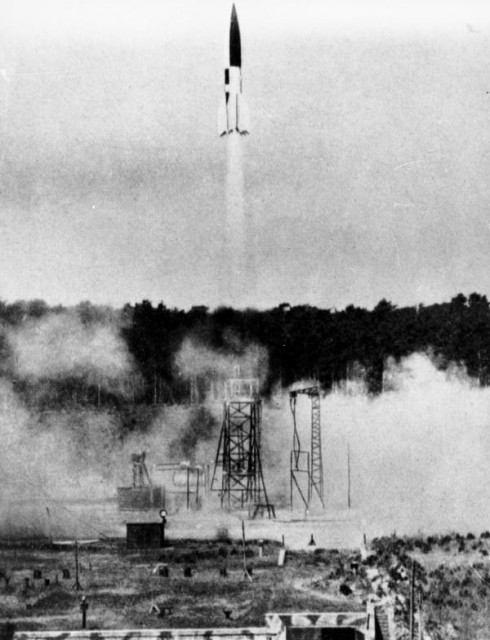
The V-2 was the world’s first long-range guided ballistic missile. The missile with liquid-propellant rocket engine was developed during the Second World War in Germany as a “vengeance weapon”, designed to attack Allied cities as retaliation for the Allied bombings against German cities. The V-2 rocket was also the first man-made object to cross the boundary of space.
Beginning in September 1944, over 3,000 V-2s were launched by the German Wehrmacht against Allied targets during the war, firstly London and later Antwerp and Liège.
Modern equivalent:
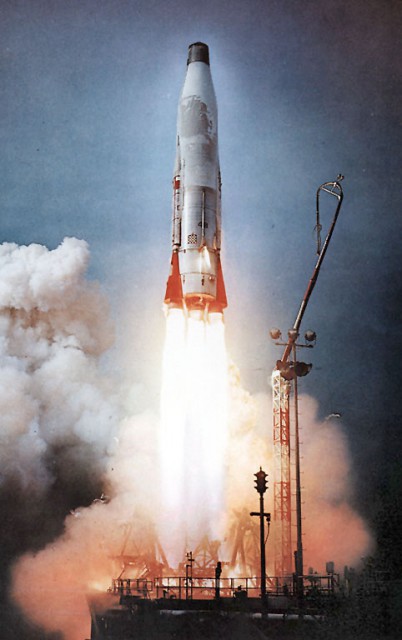
An intercontinental ballistic missile (ICBM) is a guided ballistic missile with a minimum range of more than 3,400 miles primarily designed for to deliver nukes. ICBMs can be launched from Missile Silo’s, Submarines, Airplanes and even vehicles. This made them a key part of the MAD doctrine as this flexibility would ensure the capability to strike back and guarantee the other sides destruction.

